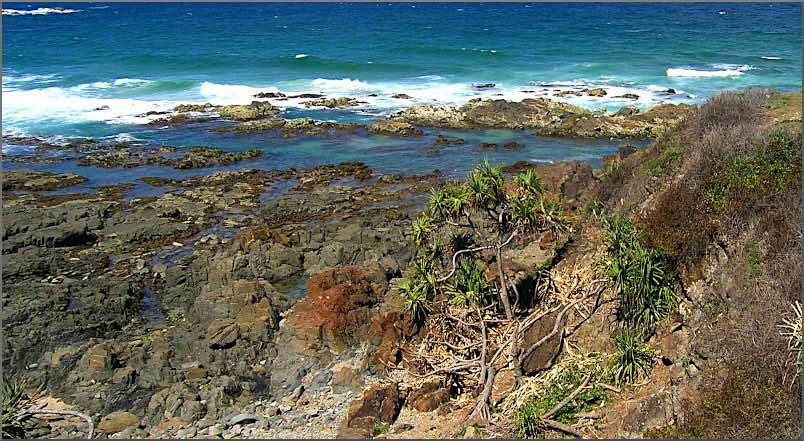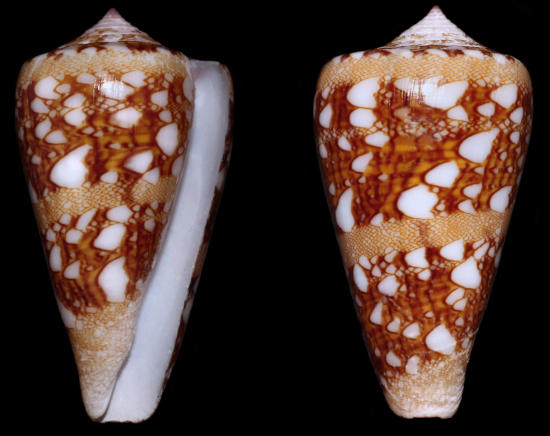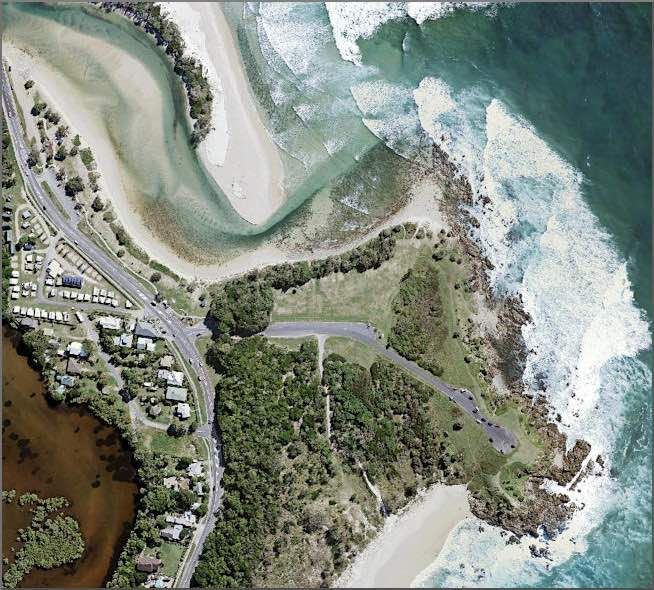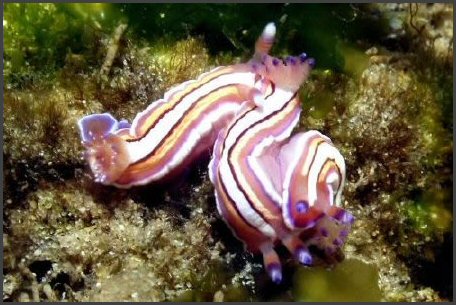HASTINGS POINT
Unlike other parts of the New South Wales coastline, the far northern region has very few rock platforms that are sheltered enough to provide a habitat for other than the more hardy species. Woody Head at Iluka is the finest example of such a habitat and has been recognised as such for many years. It has also been included in a National Park and given protection.
Another site of great importance is Hastings Point on the Tweed coast. Although not as large an area as Woody Head, in this area of long sandy beaches and exposed headlands it is a treasure for anyone interested in marine life. The diversity of tropical species observed here at various times can be amazing, notably Molluscs, as the partial checklist I have included will show. Other phyla are also well represented. I have so far been able to photograph 22 species of hermit crabs and 40+ crabs. Tropical Shrimps and Mantis shrimps also occur here as do many species of Flatworms, Polychaete worms, Sea Urchins, Brittle Stars, Anemones, Sponges, Sea Cucumbers and Tunicates. Some tropical species occurring intertidally here have yet to be found elsewhere on the New South Wales coast. For example, the first sightings in Australia of the sea-slug Bosellia sp and the crab Goniosupradens acutifrons were recorded here.























